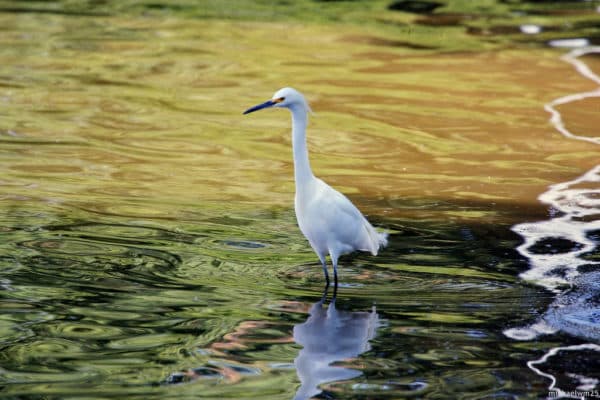
Does your local swimming hole have a lovely blue-green hue? That could mean it’s overrun by blue-green algae -- toxin harboring blooms that thrive in Colorado waters during the summer months. But have no fear, scientists with the state's public health department are developing a quicker and more accurate test to determine the toxin content of that beautiful Kool-Aid water.
Blue-green algal blooms the world over have increased in recent years. Toledo had a particularly dramatic problem with Lake Erie water. The Environmental Protection Agency says this partially due to excess phosphorous and nitrogen in waters with frequent human use.
Last year, the EPA released health advisories for drinking water contaminated with algae, with advisories for recreational use to come. And while not all algae is harmful, it can be difficult and expensive to determine just which types are toxic and in what ways.
Remember the green goop that overran Ferril Lake last year? And again two weeks ago? That goop is not this goop. The algae in City Park is non-toxic green algae, according to Cindy Karvaski, a spokesperson for Denver Parks and Recreation.
But to figure that out, one year ago, Karvaski said samples had to be sent to a lab in Florida. Those tests can cost up to $700 per sample and take about three days to process. A local lab can email results in 24-36 hours, the Department of Public Health and Environment says.
"Having a local lab is important," Mindi May of Colorado Parks and Wildlife said in a press release. "We can more efficiently monitor blooms and warn the public if there are health concerns.”
The Laboratory Services Division of the Colorado Department of Public Health and Environment is taking a proactive approach to determining the toxin content of blue-green algae.
“Our goal is to have the analytical capability to detect chemicals of emerging concern in water,” Eric Petty, the chemistry program manager said in a press release. “These include cyanotoxins, perfluorinated compounds and other chemicals that currently are not regulated by the EPA.”
The lab has developed a new test for the cyanotoxins, or toxins specific to the cyanobacteria that make up algae. The new test can detect 11 types of cyanotoxins, compared to the six detected by standardized EPA testing. The standard test, called ELISA (enzyme-linked immunosorbent assay), provides large-scale screening for water samples, but has a propensity for false positives.
Known toxins in blue-green algae can cause flu-like symptoms, liver and kidney damage, numbness, even paralysis and death, according to the EPA. So if you or your furry friend experience discomfort after ingesting contaminated water, the Department of Health recommends seeking medical (or veterinary) attention.
Test developer Can Wang will soon be publishing the new research in the Journal of AOAC International. Until then, the Harmful Algae Workgroup, which formed last year to manage cyantotoxin risk in Colorado, has our backs.
Multimedia business & healthcare reporter Chloe Aiello can be reached via email at [email protected] or twitter.com/chlobo_ilo.
Subscribe to Denverite’s newsletter here.














